The history of voice recorders is fascinating and full of technological advances that have allowed us to go from bulky mechanical devices to modern spy tools like the personalized credit card spy recorder from ESPIAMOS®. This article explores how we got to this point, highlighting the most important technological milestones.
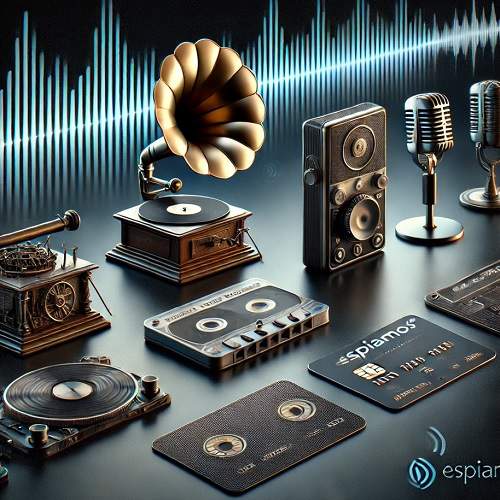
Table of Contents
- Origins of Voice Recording
- Analog Recorders: The Tape Recorder
- The UHER 4200: An Icon in Portable Recording
- The Digital Revolution: Portable Digital Recorders
- Miniaturization: Covert Recording Devices
- Spy Technology: Voice Recorders in Credit Cards
- Other Modern Advances in Voice Recording
- Conclusion
Origins of Voice Recording
Voice recording has its origins in the 19th century, when Thomas Edison invented the phonograph in 1877. This mechanical device was the first to record and play back sounds, using a cylinder covered in aluminum foil. Although the phonograph was far from portable and required complex manual operation, it marked the beginning of audio recording.
Improvements soon followed with the gramophone , which used discs instead of cylinders, making recording storage more practical. These early advances laid the groundwork for what would later become voice recording as we know it.
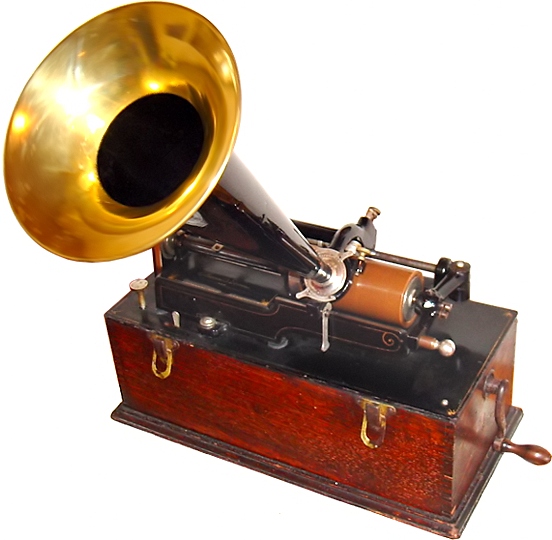
Analog Recorders: The Tape Recorder
In the 1930s, the introduction of magnetic tape recorders revolutionized voice recording. The tape recorder , developed in Germany, used plastic magnetic tapes coated with ferromagnetic particles to store audio. This device was quickly adopted by the broadcasting and espionage industries due to its ability to record and play back high-quality audio.
Magnetic tape recorders also became more portable over time, as was the case with pocket recorders. Although they were still relatively large and heavy by modern standards, they allowed for mobility and discretion that had not been possible before. This technology remained dominant for several decades, until the advent of digital devices.

The UHER 4200: An Icon in Portable Recording
In the 1960s and 1970s, the UHER 4200 Report Monitor stood out as one of the most iconic voice recorders. This device, manufactured in Germany by UHER Werke , was widely used by journalists and intelligence agencies due to its portability, reliability and the quality of its audio recording.
The UHER 4200 operated on open-reel tapes and offered a level of sound quality that made it the preferred choice for field recordings and radio reports. In addition, its relatively compact size and rugged construction allowed it to withstand harsh working environments. These aspects made it popular not only in broadcasting, but also in espionage during the Cold War.
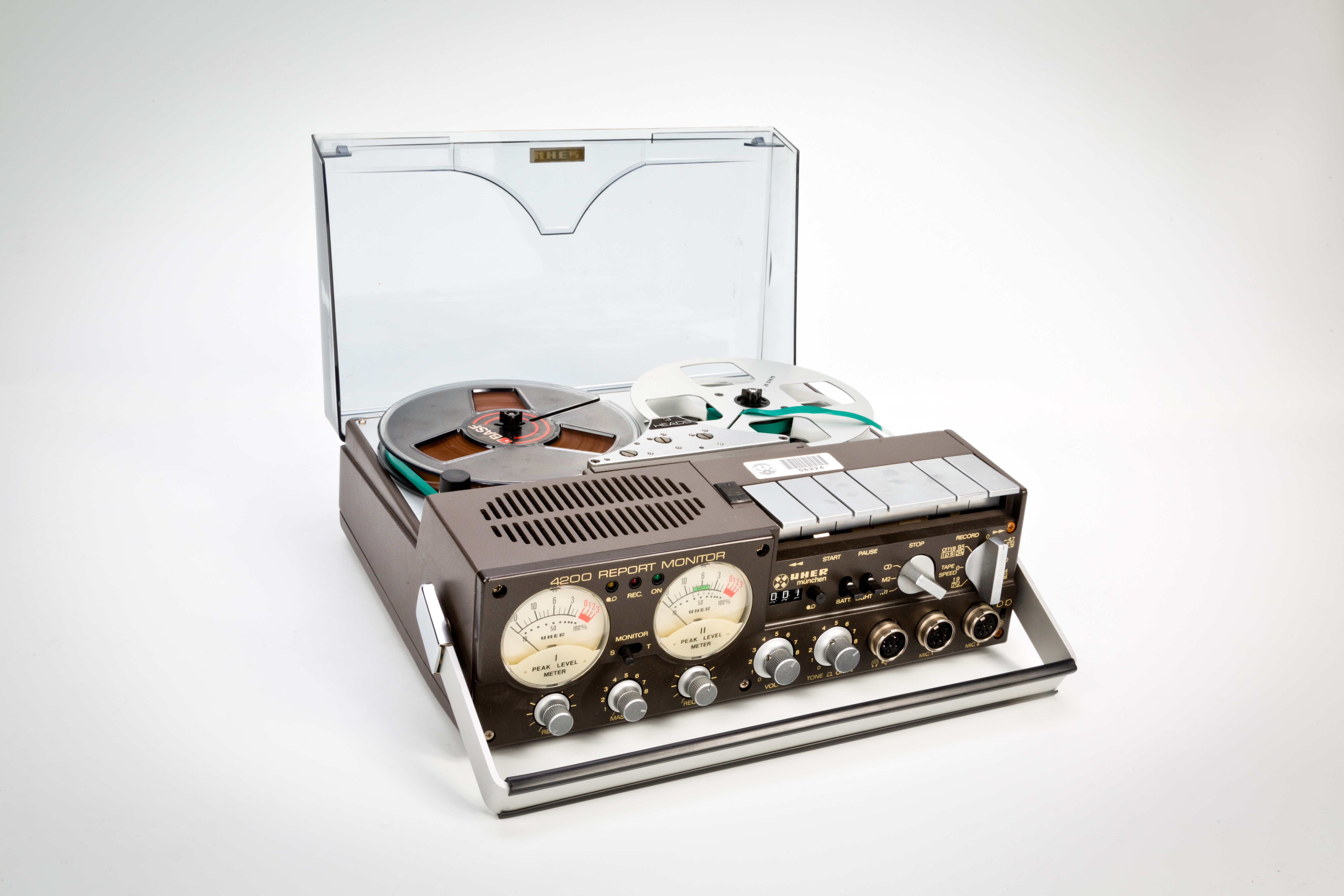
Its main features included:
- Portability: Although large by today's standards, it was small compared to other recording equipment of the time.
- Durability: Its rugged design made it ideal for field work.
- Battery or mains powered: Allowing for versatility both in the studio and outdoors.
- Manual speed control: This gave operators control over the quality and duration of recordings.
The UHER 4200 was also a key tool in covert recording, as it was relatively quiet in operation and could be connected to hidden microphones. Many of the historical espionage and reporting events of the time were recorded with this device, making it a key piece in the history of voice recording.
The Digital Revolution: Portable Digital Recorders
With the advent of digital technology in the 1990s, voice recorders underwent a radical change. Portable digital recorders made it possible to store recordings in digital format, eliminating the need for magnetic tapes. Not only were these devices smaller and lighter, but they also offered greater storage capacity and better audio quality.
Digital recording was a revolution because, unlike analogue tapes, digital files could be copied and transferred without losing quality. The first digital recorders used memory cards and miniature hard drives, and soon became essential tools for journalists, private detectives and espionage professionals. Coin-sized recorders are now available in the form of the Russian Soroka spy recorders as shown below.
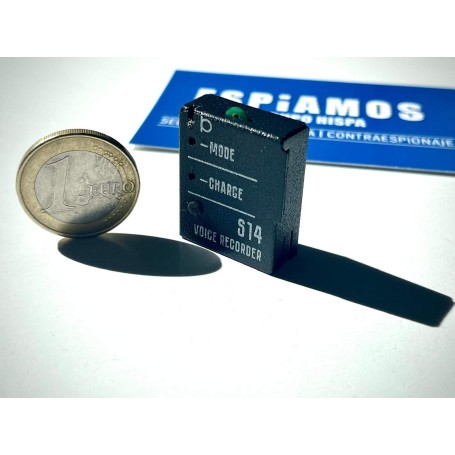
Miniaturization: Covert Recording Devices
As technology advanced, recording devices not only became digital, but also began to shrink significantly in size. Miniaturization allowed for the creation of hidden recording devices that could be integrated into everyday objects such as pens, watches, and glasses.
These devices were (and still are) widely used in espionage and undercover investigations. The miniaturized recorders offered a way to capture audio without arousing suspicion, making them invaluable tools for those who needed to operate discreetly.
However, as time went by, the need for even more compact and higher capacity devices led to the development of more advanced technologies, such as the credit card spy recorder.
Spy Technology: Voice Recorders in Credit Cards
The latest advancement in the evolution of voice recorders is the credit card spy recorder . This innovative device, available at ESPIAMOS ®, represents the pinnacle of covert recording technology.
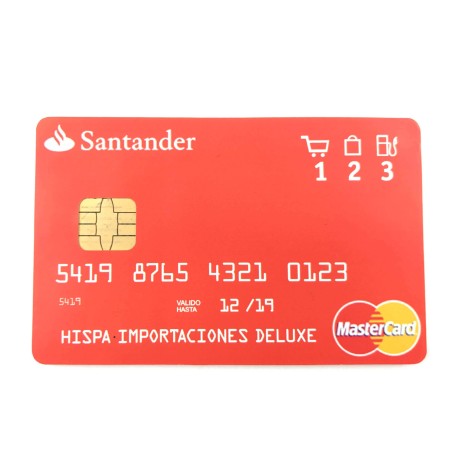
Credit card spy recorders are characterized by being completely discreet. At first glance, they look like a regular credit card, but inside they house an advanced voice recording system. This recorder is thin enough to fit in a wallet, but it has impressive capabilities, such as high-quality audio recording and a large internal memory.
Its main features include:
- Ultra-slim design: Perfectly imitates a credit card, making it undetectable.
- High storage capacity: Store hours of recording without compromising quality.
- Easy operation: A single button makes starting and stopping recording quick and easy.
- Extended autonomy: Thanks to its long-lasting battery, it allows you to record for long periods without the need for frequent recharging.
These types of recorders are ideal for professionals who require maximum discretion in their operations, such as private detectives, investigative journalists or security agents. In addition, the credit card recorder is easy to transport, making it a practical and versatile tool for covert recording in any environment.
Other Modern Advances in Voice Recording
The evolution of voice recorders has not stopped with the advent of digital recorders or miniaturization. In recent years, the integration of artificial intelligence (AI) and advanced audio processing has enabled the creation of devices that not only record, but also analyze and transcribe audio in real time.
Some of the most significant advances include:
- AI Recording: Devices that filter out background noise and automatically adjust audio levels for clearer recordings.
- Cloud Integration: New recorders allow recordings to be uploaded directly to the cloud for secure storage and later analysis.
- Voice Assistants: Technology has enabled the creation of voice-activated recorders, providing greater discretion in their use.
These advances have allowed voice recorders to evolve from purely analogue tools to intelligent systems that can assist professionals such as journalists, researchers or security agents in real time.
Conclusion
The evolution of voice recorders has been impressive, from the first mechanical devices to sophisticated digital covert recording systems. The arrival of the ESPIAMOS® credit card spy recorder marks a new milestone in this evolution, offering a discreet, effective and advanced solution for those who need to record audio without raising suspicion.
As technology continues to advance, we're likely to see even smaller and more powerful devices, but for now, the credit card spy recorder represents the latest in spy technology and hidden recording. If you need a recording device that combines discretion and performance, this recorder is the ideal choice.






 WhatsApp
WhatsApp Telegram
Telegram


